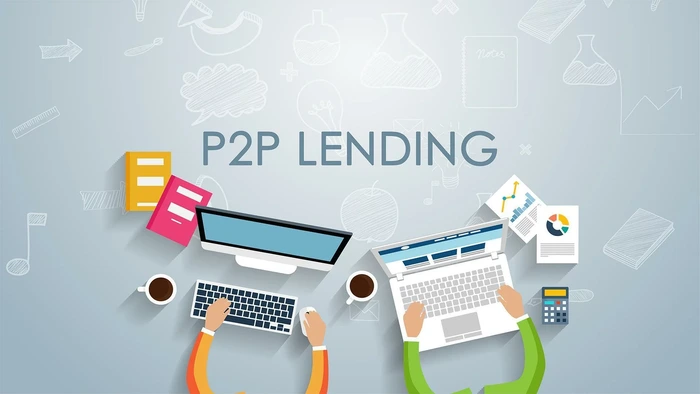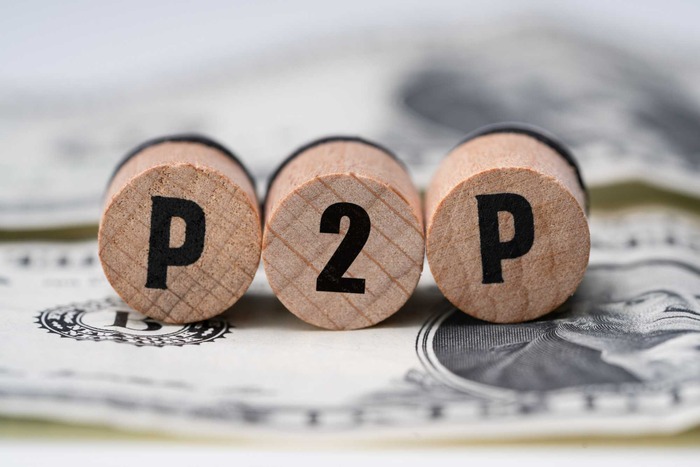How much will the global P2P lending market be worth in 2028? $1 billion? $5 billion? According to the latest P2P lending research, the market is set to be worth a whopping $626.5 billion in 2028—approximately 2.7 times the current net worth of Elon Musk ($225 billion in June 2023). This is a rise in last year’s P2P lending market size, up from US$ 147.9 billion in 2022 with a CAGR of 26.1%.
Peer-to-peer lending growth trends: a revolution in technology
Of course, this uptick in interest in P2P lending comes as little surprise. P2P lending has proven to be a formidable alternative to traditional financing systems, offering both borrowers and lenders alike greater flexibility throughout the lending process—from origination to repayment.
For lenders, it offers:
- Flexibility—from the amount of investment to risk to terms and conditions, contemporary P2P platforms allow lenders to make a wider variety of decisions more easily, increasing their control over their opportunities.
- Diversification— alternative lending allows investors to spread their investments across various loans and assets. This diversifies their portfolio and reduces the risk of putting all their eggs in one basket.
- Increased investment control—In the past, investors were more closely tied to their bank or investment fund, and the opportunities they felt worthy. Now, with the rise of P2P lending, investors can more closely control the opportunities they invest in, monitoring digitally and potentially in real-time.
And for borrowers:
- Easier access to capital—in the past, borrowers were tied to traditional borrowing processes, with potentially a lot of red tape. Contemporary P2P systems cut out the middleman and connect borrowers and lenders via intuitive platforms that allow participants to select the terms of the loan with more flexibility while maintaining the security of a traditional lending platform.
- More competitive interest rates—with no bank to pay and no middleman, P2P lending is able to offer more competitive rates on the loans offered. This increases the competitiveness of the lending platform and boosts its chances of success in the future.
- Flexible loan amounts—unlike more traditional bodies, P2P lending platforms can offer a wider variety of flexibility in terms of loan amounts and repayment terms. For the most up-to-date systems, personalized repayment plans to suit the borrower can even be developed. This is unlike traditional systems, which use old-school credit scoring methods to review and approve loans.
Of course, these lists aren’t exhaustive, and this is one of the key features of P2P lending itself. It has the flexibility to deliver a slightly different experience to its users. All of this is made possible through the usage of the latest technology, such as artificial intelligence, machine learning, and blockchain.
P2P lending report statistics: what the market experts say
Hailed as the “wisdom of the crowds” in a Financial Times article back in 2014, the peer-to-peer lending growth trends have been on the up-and-up. This solution is said to be effective for both the world’s leading markets and lesser-economically developed states alike due to its flexibility in functionality.
Peer-to-peer lending trends in the US suggest that the market could be set to counteract the predatory practices of the past, such as payday loans and the like. It also offers potential in industries such as real estate and student loans, where borrowers are seeking fairer, or at least more controllable, loans to suit their circumstances.
In less economically developed countries where interest rates are often high and loans hard to come by, P2P lending could be seen as an effective alternative to offering credit in a responsible way—based on data, not stereotypes.
With the view that P2P is a global solution, allowing flexibility of implementation across various markets, it’s hard not to believe the optimistic reports that suggest that the market could reach a total value of $1.3 trillion by 2032. For perspective, this is the approximate GDP for Australia or Spain, making P2P a powerful lending tool.
Trends in P2P lending to watch out for 2023-2028
As the market value rises, so too does interest in new innovative solutions to stay one step ahead of the competitors. So, what does this look like for the P2P lending market? Here are the top 3 trends that are here to stay.
- More AI and machine learning solutions—powerful features, constant development, AI and machine learning offer enhanced credit checking possibilities, automation capabilities, and even more. As this tech continues to evolve, its usage in P2P will adapt too.
- Increasing innovations in the way of blockchain—from smart contracts to managing transactions, and increasing accountability, the way blockchain is integrated into P2P is set to grow and is a must for future-looking solutions.
- Interactive solutions that improve usability—traditional banks’ processes are a pain point. An interactive, respectful UX that puts all parties (borrower and lender) first is a winning solution. This drive toward personalization isn’t set to die out anytime soon, so expect future solutions to include more intuitive, usable interfaces.
P2P lending in the USA and beyond: are there any disadvantages?
Just as P2P lending trends have shown market confidence, that doesn’t mean it’s an ideal solution. There are a number of things to consider before building such a platform, investing in one, or seeking a loan, including the Risk of default—for P2P lending software to offer flexibility, may lower the credit score requirements, and assess borrower risk in less standard ways.
- Platform risk—similar to any new technology, it may be subject to bugs or failure, which can have varying risks on investment.
- Market risks—no market is secure, no matter how diversified your portfolio is. P2P lending is no exception.
- Regulatory risk—P2P may be popular in some lesser regulated markets, but those adopting P2P lending in the USA may be met with more stringent regulations that can impact performance.
- Potentially high-interest rates for borrowers—although some P2P solutions may be able to offer low rates for borrowers, this is not necessarily true across the board and rates may be higher than traditional lenders to account for risk.
- Platform fees—borrowers and lenders may be charged additional fees when using platforms. This needs to be accounted for in any loan.
- Data security—just like any digital solution, P2P lending carries an inherent risk of data security breaches, which means companies need robust solutions in place to deal with this.
All of these need to be taken into consideration; the same as for any technological innovation in the fintech sector.
Thinking of jumping on the P2P lending trends
From the market trajectory, it’s clear that P2P as a concept is only continuing to grow. That applies both to the market value figures and the technologies used in making such solutions possible.


